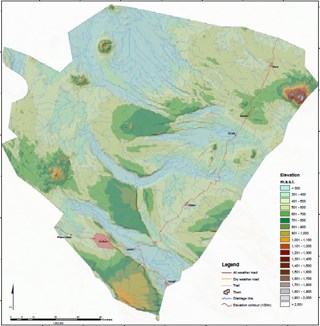Multiple techniques to increase freshwater availability
3R - Recharge, Retention and Reuse
Recharge, Retention and Reuse of water are the three core components of 3R. The 3R concept is applied in regions threatened by water scarcity. The implementation of practical interventions contributes to an innovative and sustainable approach to water management. In practice 3R means collecting and storing water excess, while making it available during periods of drought.
Multiple techniques can be applied to increase freshwater availability. The most appropriate combination of 3R interventions is selected by means of an integrated assessment. 3R is demand-driven. Stakeholder platforms provide valuable insights into stakeholders’ perceptions, opinions and needs. The outcomes of these dialogues and discussions are combined with an in-depth physical assessment in order to identify the most effective 3R-interventions for a certain site.
Natural and artificial buffers are replenished during the rainy season. The advantages of these buffers are twofold: a decrease in flooding risk and an improved water availability during dry periods. Depending on the site characteristics and the techniques used water can be used both for drinking water as well as for irrigation purposes.
The strength of 3R techniques is in combining natural circumstances with local priorities. By making optimal use of a site’s hydrogeological characteristics solutions can be developed that match stakeholders’ needs. Resilience and water access at regional scale cannot be reached at once; they are the result of many local interventions appropriately working together. The 3R concept has been successfully applied in Mali, Ethiopia, Kenya, Burkina Faso, Mongolia and Nepal.
For more information please refer to www.bebuffered.com
 Elevation and drainage pattersn
Elevation and drainage pattersn